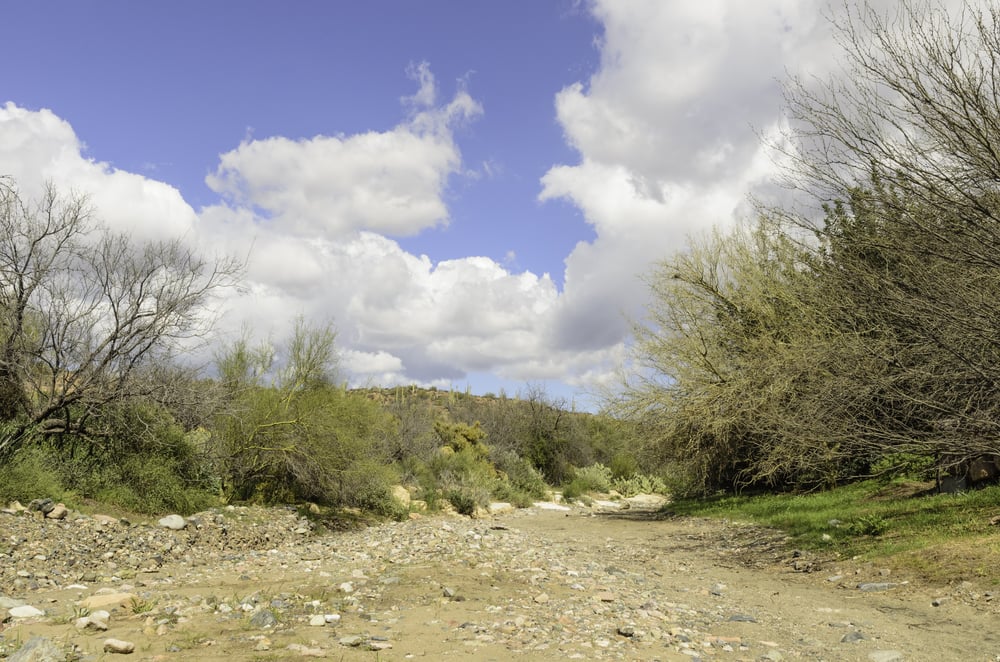Search for topics or resources
Enter your search below and hit enter or click the search icon.
August 31st, 2019
2 min read
By Chris Greene

You hear the word flooding and desert then you are probably laughing. However areas like Arizona average 40-100 floods a year. Now majority of this flooding occurs during monsoon season. We want to discuss what is a monsoon? When is monsoon season? and What are the flooding dangers of a dry monsoon season?
Arizona Monsoons
So what is a monsoon? A monsoon is traditionally defined as a seasonal reversing wind accompanied by corresponding changes in precipitation, but is now used to describe seasonal changes in atmospheric circulation and precipitation associated with the asymmetric heating of land and sea.
Monsoon season in Arizona generally runs June 15th to September 30th. Arizona receives most of its rain during monsoon season but most of it usually falls in the month of July. So how much rain is it? Well on average Arizona receives about 12 inches of rain a year. You wouldn't think this would cause much of an issue but parts of Arizona like Scottsdale and Phoenix have a base flood elevation of one foot. This means that flooding could be an issue with less than an inch of rain. Now you can see why this area has 40-100 floods a year. So what happens when there is a dry monsoon season.
Risks of a Dry Monsoon Season
Arizona is experiencing one of its driest monsoon seasons ever. While this makes some people happy it can create additional flooding exposures. So let's talk about some of those impacts.

When a dry monsoon season occurs it makes the Arizona area even dryer than before. So when it does rain it can be like water running down cement because it's so dry causing more flooding to lower lying areas or areas that are in an AO flood zone. This can also cause mudflows, this is an area fluid or hardened stream or avalanche of mud. It can cause mudslides as well. These are a common type of fast-moving landslide that tends to flow in channels. It's important to know that mudflows are covered under flood insurance but mudslides are not.
When an area does not see water runoff for a while and then large amounts of it during a short amount of time it can create issues. This is where flash flooding occurs and water has to redirect itself because there is no where for it to go. This can cause flooding in many areas especially like Lake Pleasant which serves as an important water source for Maricopa, Pinal, and Pima counties.
Monsoons can cause serious damage through Arizona as we have seen through the years but the lack of monsoons can cause just as much damage. Proper amounts of rain are needed to properly manage flood plains throughout Arizona.
If you have questions about how monsoons are impacting your flood insurance options in Arizona you can visit our website Flood Insurance Guru. You can also visit our YouTube channel or Facebook page The Flood Insurance Guru where we do daily flood education videos. You can also tune into our weekly podcast The Flood Guru.